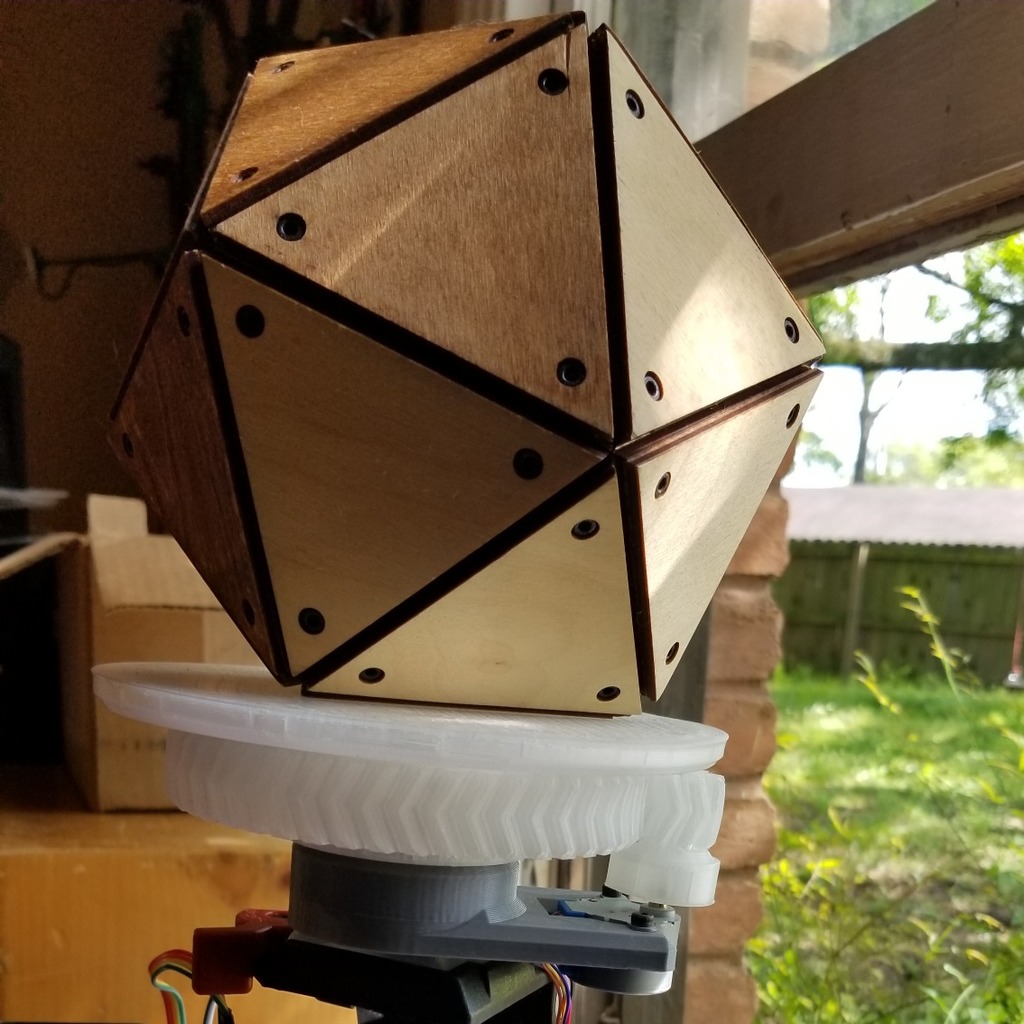
Motorized Turntable for 3D Scanning
thingiverse
It looks like you've provided a code snippet from an Arduino project. The code appears to be designed to control a stepper motor, which is used in a turntable application. Here's a breakdown of the code: 1. The `setup()` function initializes the Arduino pins as outputs and sets them low. 2. The `step()` function takes two arguments: an array of step sequences (`steps`) and the number of steps in the sequence (`stepCount`). It calculates the current step within the sequence based on the global variable `currentStep` and the number of steps in the sequence. It then sets the four pins to their proper state for the current step in the sequence, taking into account the direction (clockwise or counterclockwise). 3. The `loop()` function is an infinite loop that: * Prints the current step number to the serial console (commented out to speed up execution). * Calls the `step()` function with the half-step sequence and count. * Increments the global variable `currentStep` by 1. * Checks if the target number of steps (`targetSteps`) has been reached. If so, it resets the current step to 0 and reverses the direction (commented out). 4. The code uses a delay of 1 millisecond between each step. Some notes on the code: * The `pins` array is not defined anywhere in the code. * The `waveSteps`, `fullSteps`, and `halfSteps` arrays are not defined anywhere in the code. * The `clockwise` variable is used to determine the direction of the motor, but its value is not changed within the loop. This means that the motor will always move in the same direction. * The `targetSteps` variable is used to control the number of steps taken by the motor, but it's not clear what value this should be set to. To get your turntable working, you'll need to: 1. Define the `pins` array with the correct pin numbers for your Arduino and stepper driver. 2. Define the `waveSteps`, `fullSteps`, and `halfSteps` arrays with the correct step sequences for your motor. 3. Set the `targetSteps` variable to a value that suits your needs (e.g., 2048 for wave stepping or 4096 for half stepping). 4. Make sure the Arduino is properly connected to the stepper driver and power supply. Once you've completed these steps, disconnect the Arduino from the computer, plug it into the power cable, and connect the stepper to the stepper driver. Your turntable should now function! As a final note, be aware that leaving this running for large amounts of time can cause significant heat buildup on the Arduino, so be sure to monitor its temperature and take necessary precautions.
With this file you will be able to print Motorized Turntable for 3D Scanning with your 3D printer. Click on the button and save the file on your computer to work, edit or customize your design. You can also find more 3D designs for printers on Motorized Turntable for 3D Scanning.
